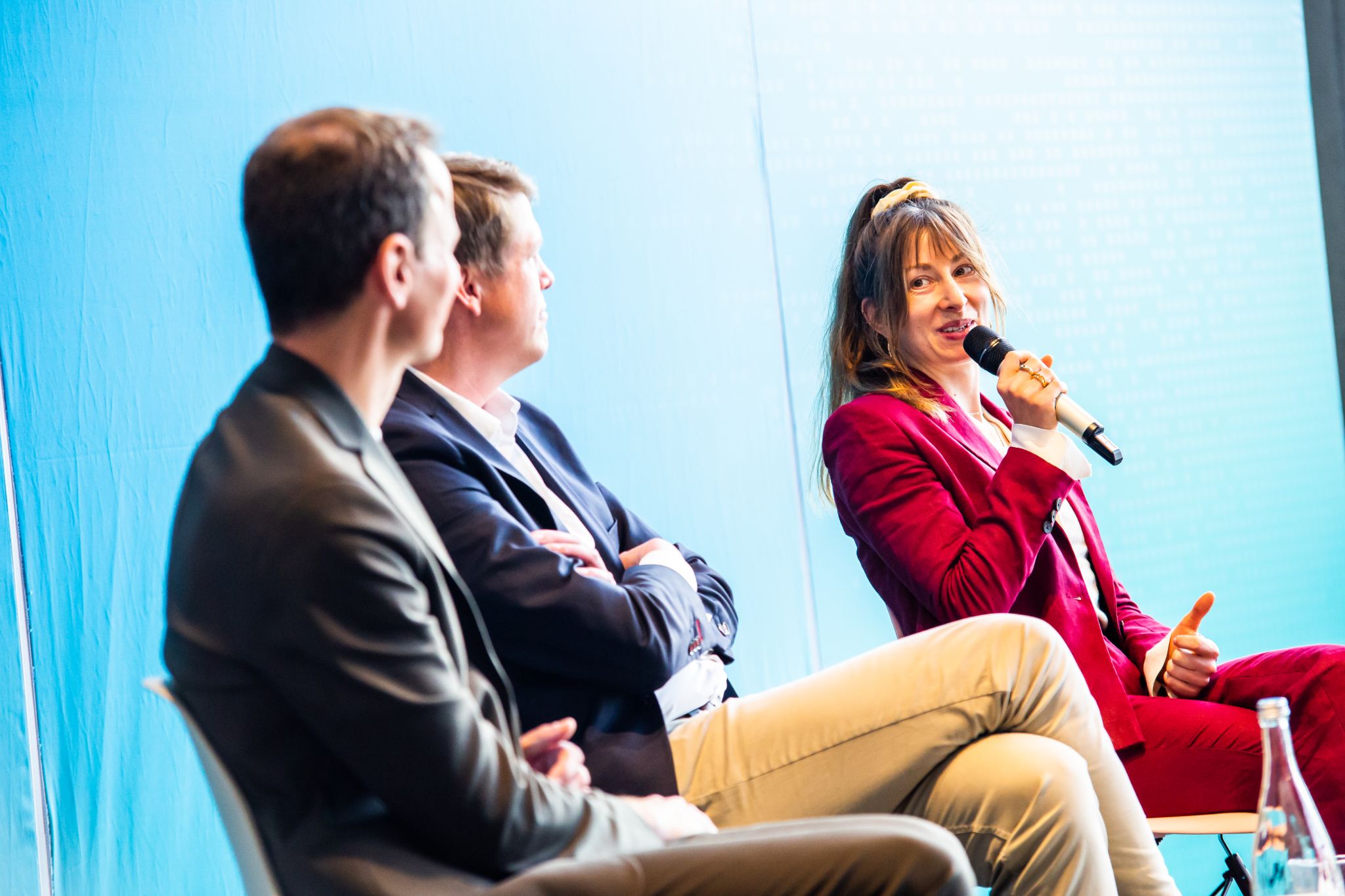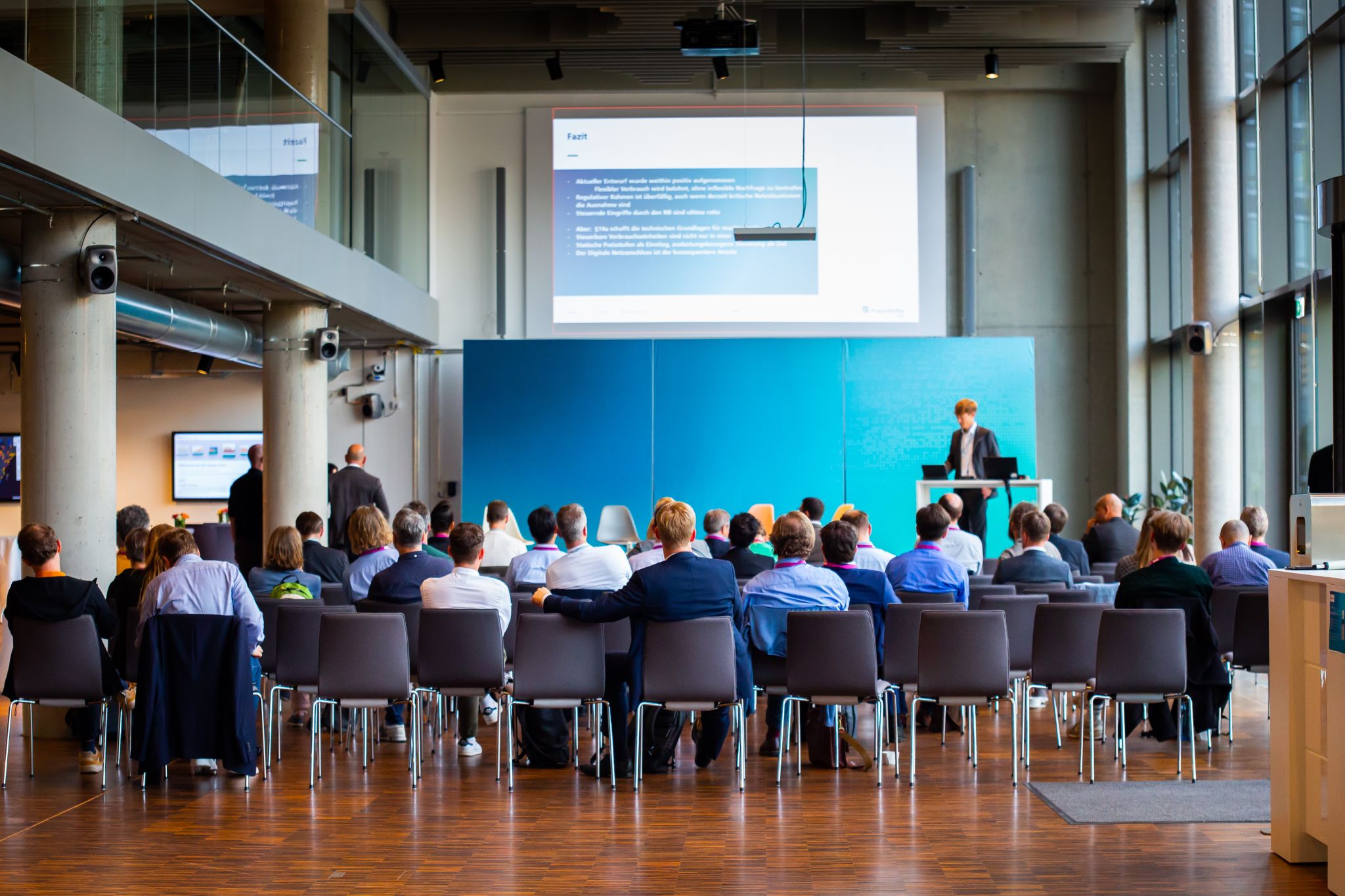Discussion on the current state of digitisation of the energy system, opportunities and challenges


The Fraunhofer Symposium on the Digitisation of the Energy System took place on October 11 at Fraunhofer ENIQ in Berlin. Experts from the energy industry, politics and academia attended the event to discuss the current status of the digitisation of the energy system, opportunities and challenges. Regulatory innovations from Berlin and Brussels as well as technical innovations and systemic application examples of digitisation in the energy system were presented. The symposium, which took place for the second time, was organized by Fraunhofer CINES and offered an excellent opportunity to stay up-to-date in the field of digitization of the energy system.
Manuel Wickert (Fraunhofer IEE), Head of the CINES Dimension Digitalisation, opened the symposium with a comprehensive summary of what has happened in the digital energy transition in Germany since the symposium in 2022. His conclusion: Although there has been visible development, there is still a lack of an overall strategy, particularly at the national level.
In his keynote speech, Timon Gremmels (SPD), member of the German Bundestag, gave an overview of the regulatory progress and challenges in the digitalisation of the energy system. In addition, the international perspective was discussed with an insight into the state of digitalisation at the international level in countries such as Australia, New Zealand, the USA, India and China. In the panel discussion, participants addressed the question »Can Germany still be a pioneer in digital energy?«. The panelists agreed that the energy industry is ready for digitalisation, but that the regulatory framework offers too little agility.
The discussion continued in depth in the thematic sessions focusing on data economics, sector coupling, plant communication, network planning and operation, and cybersecurity. The discussion focused on the following points, among others: Sandboxes and experimental projects via data rooms can enable data-driven innovations and business models. In addition to setting up data rooms, there must also be initiative to use them in a value-added way. Many funded projects show that innovation in the energy sector is possible. In the future, these projects must go beyond pilot status and stand the test in practice. The smart meter rollout started last year and is gaining momentum; if the momentum is positive, targets can be reached by 2030. In the outlined picture of the future, the SMGW plays a key role and enables mutual benefits and synergies. IT/OT security is an important issue. To ensure it, budgets must be increased and the entire defense chain must be closed. Regulatory can help increase awareness of IT/OT security. Professionals and skills need to be expanded towards cyber resilience. This is important as the cyber attack threats continue to grow.
Conclusions from the symposium: In order to drive forward the digitalisation of the energy system, an intensive exchange with the regulatory level is required. Digitalisation is a cross-cutting issue that must be taken into account at all levels of the energy transition. Previous legislative milestones in this area are the European Data Act, the EU RCE Directive, the NIS-2 Directive, the GNDEW, and §14a EnWG.
The monitoring report on the digitalisation of the energy system prepared by the CINES experts will be published soon. You can find out more about our work on the digitalisation of the energy transition here.
 Cluster of Excellence Integrated Energy Systems
Cluster of Excellence Integrated Energy Systems